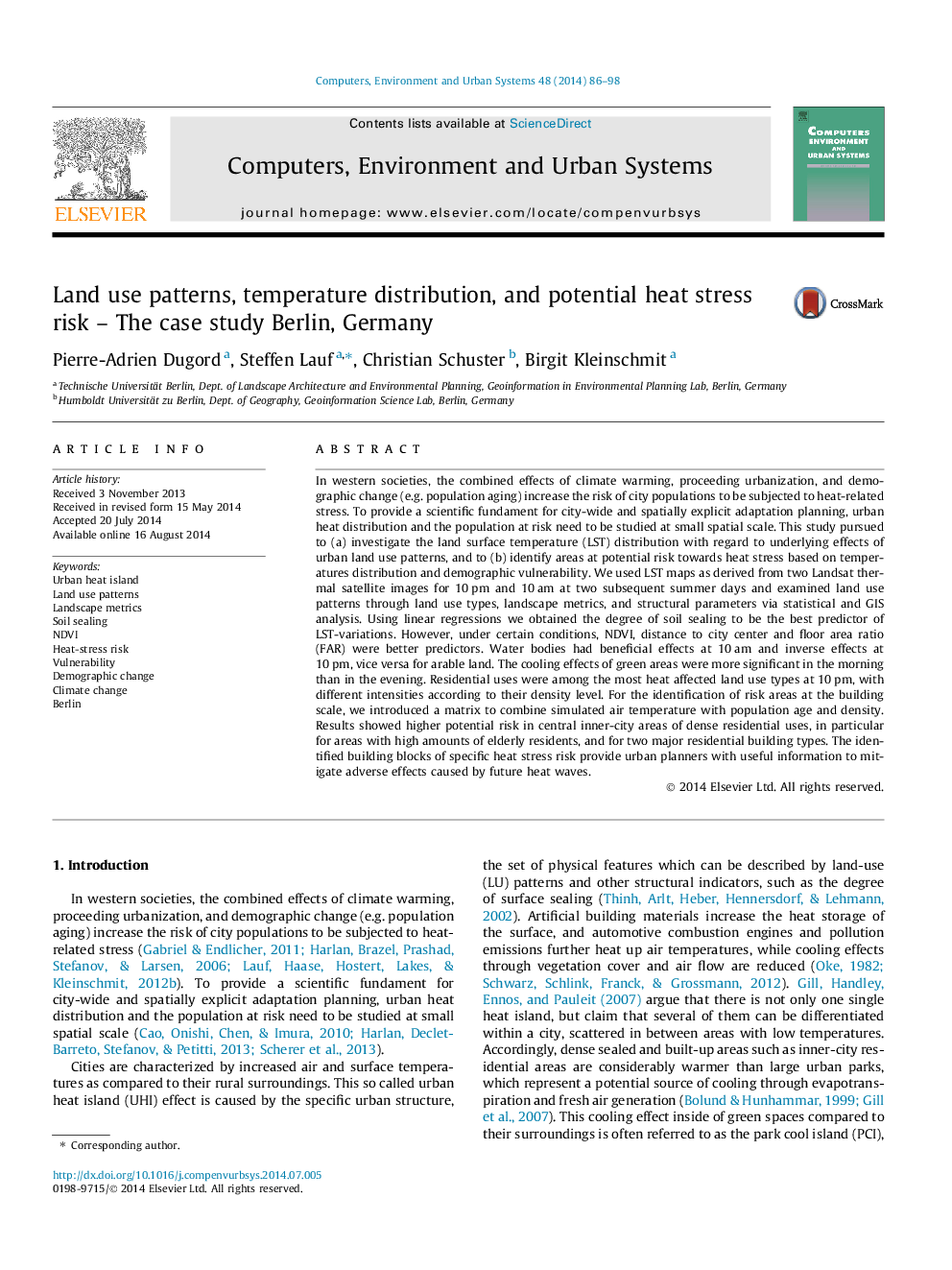| کد مقاله | کد نشریه | سال انتشار | مقاله انگلیسی | نسخه تمام متن |
|---|---|---|---|---|
| 506345 | 864896 | 2014 | 13 صفحه PDF | دانلود رایگان |
• We identify the influence of the urban structure on land surface temperature using several structural indicators.
• We present a simple assessment of potential heat-stress risk on the building scale.
• The identified results provide useful information to urban planners in view of proceeding climatic and demographic change.
In western societies, the combined effects of climate warming, proceeding urbanization, and demographic change (e.g. population aging) increase the risk of city populations to be subjected to heat-related stress. To provide a scientific fundament for city-wide and spatially explicit adaptation planning, urban heat distribution and the population at risk need to be studied at small spatial scale. This study pursued to (a) investigate the land surface temperature (LST) distribution with regard to underlying effects of urban land use patterns, and to (b) identify areas at potential risk towards heat stress based on temperatures distribution and demographic vulnerability. We used LST maps as derived from two Landsat thermal satellite images for 10 pm and 10 am at two subsequent summer days and examined land use patterns through land use types, landscape metrics, and structural parameters via statistical and GIS analysis. Using linear regressions we obtained the degree of soil sealing to be the best predictor of LST-variations. However, under certain conditions, NDVI, distance to city center and floor area ratio (FAR) were better predictors. Water bodies had beneficial effects at 10 am and inverse effects at 10 pm, vice versa for arable land. The cooling effects of green areas were more significant in the morning than in the evening. Residential uses were among the most heat affected land use types at 10 pm, with different intensities according to their density level. For the identification of risk areas at the building scale, we introduced a matrix to combine simulated air temperature with population age and density. Results showed higher potential risk in central inner-city areas of dense residential uses, in particular for areas with high amounts of elderly residents, and for two major residential building types. The identified building blocks of specific heat stress risk provide urban planners with useful information to mitigate adverse effects caused by future heat waves.
Journal: Computers, Environment and Urban Systems - Volume 48, November 2014, Pages 86–98
